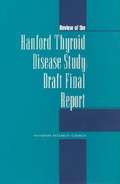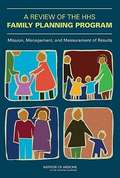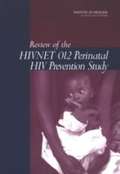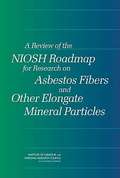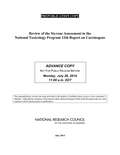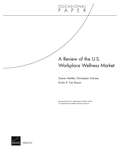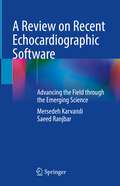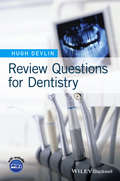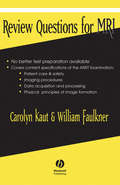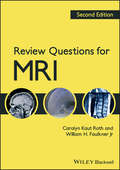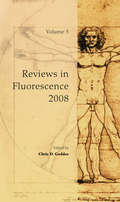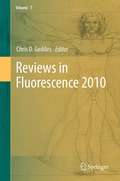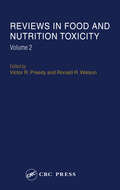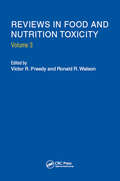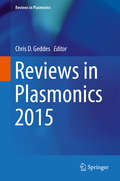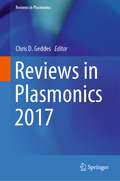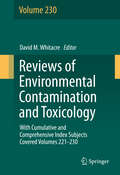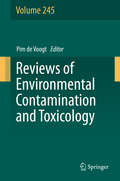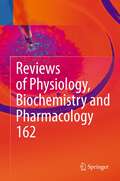- Table View
- List View
Review of the Formaldehyde Assessment in the National Toxicology Program 12th Report on Carcinogens
by Committee to Review the Formaldehyde Assessment in the National Toxicology Program 12th Report on CarcinogensMany people in the United States are exposed to formaldehyde. Exposure can occur from environmental sources (for example, combustion processes, building materials, and tobacco smoke) or in occupational settings (for example, the furniture, textile, and construction industries). Formaldehyde exposure also has endogenous sources--it is produced intracellularly as a component of the one carbon pool intermediary metabolism pathway. Scientists have studied formaldehyde for decades to determine whether exogenous formaldehyde exposure may be associated with cancer in humans. In 1981, The National Toxicology Program (NTP) first listed formaldehyde in the 2nd Report on Carcinogens as "reasonably anticipated to be a human carcinogen. " In 2011, NTP upgraded the listing of formaldehyde to "known to be a human carcinogen. " Following the new listing, Congress directed the Department of Health and Human Services to arrange for the National Academy of Sciences to independently review formaldehyde's substance profile and listing. This report presents the findings and conclusions of the committee formed in response to the congressional request. "Review of the Formaldehyde Assessment in the National Toxicology Program 12th Report on Carcinogens" concurs with NTP that there is sufficient evidence in studies that had adequate characterization of relevant exposure metrics to enable a strong conclusion about the association between formaldehyde exposure and cancer in humans. Additionally, the authoring committee independently reviewed the scientific evidence from studies in humans, experimental animals, and other studies relevant to the mechanisms of carcinogenesis and made level-of-evidence conclusions. This report finds clear and convincing epidemiologic evidence of an association between formaldehyde exposure and nasopharyngeal and sinonasal cancers in humans.
Review of the Hanford Thyroid Disease Study Draft Final Report
by National Research CouncilA Review of the Hanford Thyroid Disease Study Draft Final Report
A Review of the HHS Family Planning Program: Mission, Management, and Measurement of Results
by Institute of Medicine of the National AcademiesA Review of the HHS Family Planning Program provides a broad evaluation of the Title X family planning program since its establishment in 1970. The program successfully provides family planning services to its target audience of low-income individuals, but there is room for improvement. While the program's core goals are apparent, a secondary set of changing priorities has emerged without a clear, evidence-based strategic process. Also, funding for the program has increased in actual dollars, but has not kept pace with inflation or increased costs. Several aspects of the program's structure could be improved to increase the ability of Title X to meet the needs of its target population. At the same time, the extent to which the program meets those needs cannot be assessed without a greater capacity for long-term data collection. A Review of the HHS Family Planning Program recommends several specific steps to enhance the management and improve the quality of the program, as well as to demonstrate its direct contribution to important end results, such as reducing rates of unintended pregnancy, cervical cancer, and infertility. The book will guide the Office of Family Planning toward improving the effectiveness of the program. Other parties who will find the research and recommendations valuable include programs receiving Title X funding from the Office of Family Planning, policy makers, researchers, and professional organizations.
Review of the HIVNET 012 Perinatal HIV Prevention Study
by Institute of Medicine of the National AcademiesThe National Academies Press (NAP)--publisher for the National Academies--publishes more than 200 books a year offering the most authoritative views, definitive information, and groundbreaking recommendations on a wide range of topics in science, engineering, and health. Our books are unique in that they are authored by the nation's leading experts in every scientific field.
A Review of the NIOSH Roadmap for Research on Asbestos Fibers and Other Elongate Mineral Particles
by Institute of Medicine National Research Council of the National AcademiesAlthough asbestos is no longer mined in the United States, prior and ongoing exposures to asbestos continue to contribute to respiratory diseases, including mesothelioma, lung cancer, and asbestosis. To examine ongoing issues and concerns in this field, the National Institute for Occupational Safety and Health (NIOSH) drafted a research roadmap, Asbestos Fibers and Other Elongated Mineral Particles: State of the Science and Roadmap for Research, that provides an overview of the state of the science and a plan for future research in areas including toxicology, mineralogy, epidemiology, and exposure assessment. The focus of the proposed research is on clarifying the relationship between human health effects and the physical and chemical characteristics of a wide range of elongate mineral particles. In 2008, NIOSH asked the Institute of Medicine and the National Research Council to form a committee to provide a review of the scientific and technical quality of the January 2009 draft NIOSH Roadmap document. The present volume provides the committee's assessment of the Roadmap and recommendations for strengthening its utility for NIOSH, other federal agencies, the private sector, and other stakeholders.
Review of the Styrene Assessment in the National Toxicology Program 12th Report on Carcinogens
by Committee to Review the Styrene Assessment in the National Toxicology Program 12th Report on CarcinogensMany people in the United States are exposed to styrene. Sources of environmental exposure included food (from migration of styrene from polymer packaging materials), cigarette smoke, vehicle exhaust and other forms of combustion and incineration of styrene polymers. Occupational exposure to humans can occur during the industrial processing of styrene. It is used to create a broad spectrum of products, including latex paints and coatings; synthetic rubbers; construction materials, such as pipes, fittings, and lighting fixtures; packaging; household goods, such as synthetic marble, flooring, and molded furnishings; and automotive parts. In 2011, the National Toxicology Program (NTP) listed styrene as "reasonably anticipated to be a human carcinogen" in its 12th Report on Carcinogens, marking the first time that the substance was listed. Congress directed the Department of Health and Human Services to arrange for the National Academy of Sciences to independently review the substance profile of styrene and it listing in the NTP report. "Review of the Styrene Assessment in the National Toxicology Program 12th Report on Carcinogens" concurs with the NTP determination that there is limited but credible evidence that exposure to styrene in some occupational settings is associated with an increase in the frequency of lymphohematopoietic cancers. Additionally, the NRC report authoring committee independently reviewed the scientific evidence from studies in humans, experimental animals, and other studies relevant to the mechanisms of carcinogenesis and made level-of-evidence conclusions. Based on credible but limited evidence of carcinogenicity in traditional epidemiologic studies, on sufficient evidence of carcinogenicity in animals, and on convincing evidence that styrene is genotoxic in exposed humans, this report finds that compelling evidence exists to support a listing of styrene as, at a minimum, "reasonably anticipated to be a human carcinogen. "
A Review of the U.S. Workplace Wellness Market
by Soeren Mattke Christopher Schnyer Kristin Van BusumThis paper describes the current state of workplace wellness programs in the United States, including typical program components; assesses current uptake among U.S. employers; reviews the evidence for program impact; and evaluates the current use and the impact of incentives to promote employee engagement.
A Review on Recent Echocardiographic Software: Advancing the Field through the Emerging Science
by Mersedeh Karvandi Saeed RanjbarThis book provides simplified, easy-to-understand descriptions of the echocardiographic software used in conjunction with different echocardiography machines, such as those from Toshiba, Philips, GE, and Siemens, and explains how these sophisticated systems can best be used to exploit fully their ability to deliver more precise diagnoses and assist in treatment choice and follow-up. A variety of applications are covered, with presentation of algorithms and highlighting of tips and tricks. The emphasis is on the most recent advances in software and emerging benefits. In addition to its clinical relevance, the book highlights relevant links between cardiology and the basic sciences and should assist in promoting future novel research that will further advance the field. It will be of value for cardiologists, other interested clinicians, those pursuing fellowships in echocardiography, and sonographers; it will also be highly relevant for biomedical engineers, biomathematicians, computer scientists, and researchers in medical physics.
Review Questions for Dentistry
by Hugh DevlinReview Questions for Dentistry is an essential exam practice tool designed for undergraduate dentistry students, postgraduate MJDF candidates, and overseas candidates sitting their OREs. Using the questions as a platform for learning consolidation, this exam preparation guide provides feedback to students to enable them to assess their knowledge and understanding of the subject. Features multiple question formats including MCQs, EMQs, SAQs and find the missing word questions Answers include detailed explanations to help expand and consolidate learning The text is divided into two sections; introductory questions and questions exploring the subjects in more detail The book is accompanied by a companion website offering further interactive self-assessment tools
Review Questions for Microbiology and Immunology: A Review for the USMLE, Step 1, 2 and 3 Examinations
by A.C. Reese C.N. Nair G.H. BrownellThis is a review text on medical microbiology and immunology containing approximately 625 board-type review questions on left-hand pages with answers and explanations on facing right-hand pages. It is designed for medical students taking microbiology as well as for those studying for Step 1 of the National Board Exams and is also useful for Step 3
Review Questions for MRI
by Carolyn Kaut Roth William H. Faulkner Jr.Magnetic Resonance Imaging (MRI) is the fastest growing modality in diagnostic imaging. There are now thousands of MRI facilities across the United States and around the world, employing huge numbers of technologists. The American Registry of Radiologic Technologists has, with the help of experts in the MRI and educational fields, devised a multiple choice examination that is intended to ensure that all technologists have the required level of knowledge to practice MRI safely and competently. Carolyn Kaut and William Faulkener, experts in the field of MRI education, have compiled this book to help students prepare for the registry examination. The questions follow the structure of the syllabus and are intended to help readers test their understanding of the subject and identify any gaps in their knowledge. The book is extremely comprehensive, covering all the aspects of the examination, including patient care and safety, imaging procedures, pulse sequences and data acquisition, and imaging artifacts and options.
Review Questions for MRI
by Carolyn Kaut Roth William H. Faulkner Jr.** New revised second edition now available, with errors corrected and content fully updated ** The second edition of the classic text has been revised and extended to meet the needs of today’s practising and training MRI technologists who intend to sit for the American Registry of Magnetic Resonance Imaging Technologists (ARMRIT) examination. It provides Q&As on topics listed in the content specifications offered by the American Registry for Radiologic Technologists (AART) and offers the user with a comprehensive review of the principles and applications of MRI to prepare them for the examination.
Review Questions for the USMLE, Step 3 Examination
by Arshad MajidThe United States Medical Licensing Examination (USMLE) Step 3 is the final step of the USMLE examination series. The focus of the Step 3 examination is on the clinical sciences, physical examination, data interpretation, and appropriate management in different clinical settings. Review Questions for The USMLE Step 3 Examination contains over 400 'high yield' questions carefully written to cover the material typically found on the actual exam, allowing you to identify areas that need greater focus in your preparation. In addition, like the actual exam, this review book contains high quality color plates in a special section of the book. It is clearly not possible for any text to cover all the material encountered on the actual examination. However, there are certain topics, because of their clinical importance, that are examined year after year. Providing coverage of favorite USMLE topics and an easy-to-use layout, this book familiarizes you with the format of the examination and the areas that need further study in your overall preparation. You can work through this book piece by piece, focusing on the subjects in any order that is convenient for you. Or you may work through the book by simulating the examination and becoming familiar with the format and time limit. Review Questions for the USMLE Step 3 Examination helps you focus and plan the time you need to study, and the areas in which you should put most of your efforts.
Review Questions for Ultrasound: A Sonographer's Exam Guide
by J.A. MillerThis is a comprehensive, large-format review text with complete answers for the American national examination of the Registry of Diagnostic Medical Sonographers (RDMS). It contains 600 questions divided evenly between sections on physics, the abdomen and small parts, and obstetrics and gynecology. The authors combine many years of experience teaching diagnostic ultrasound and provide illustrative scans and drawings for added comprehension.
Reviews in Fluorescence 2008
by Chris D. GeddesThis is the fifth volume in the Reviews in Fluorescence series. To date, four volumes have been both published and well received by the scientific community. Several book reviews in the last few years have also favourably remarked on the series. In this 5th volume we continue the tradition of publishing leading edge and timely articles from authors around the world. We thank the authors for their timely and exciting contributions. We hope you will find this volume as useful as past volumes, which promises to be just as diverse with regard to fluorescence-based content.
Reviews in Fluorescence 2010
by Chris D. GeddesReviews in Fluorescence 2010, the seventh volume of the book serial from Springer, serves as a comprehensive collection of current trends and emerging hot topics in the field of fluorescence and closely related disciplines. It summarizes the year’s progress in fluorescence and its applications, with authoritative analytical reviews specialized enough to be attractive to professional researchers, yet also appealing to the wider audience of scientists in related disciplines of fluorescence. Reviews in Fluorescence offers an essential reference material for any lab working in the fluorescence field and related areas. All academics, bench scientists, and industry professionals wishing to take advantage of the latest and greatest in the continuously emerging field of fluorescence will find it an invaluable resource. Key features: Accessible utility in a single volume reference. chapters authored by known leading figures in the fluorescence field, new volume publishes annually, comprehensive coverage of the year's hottest and emerging topics, each Reviews in Fluorescence volume is citable (ISI) and indexed. Reviews in Fluorescence 2010 topics include: Novel Metal-based Luminophores for Biological Imaging. hydration Dynamics of Probes and Peptides in Captivity, how does tobacco etch viral mRNA get translated? A fluorescence study of competition, stability and kinetics, synchronous Fluorescence Spectroscopy and Its Applications in Clinical Analysis and Food Safety Evaluation, quantitative molecular imaging in living cells via FLIM, a Multiparametric Imaging of Cellular Coenzymes for Monitoring Metabolic and Mitochondrial Activities, optimal Conditions for Live Cell Microscopy and Raster Image Correlation Spectroscopy (RICS).
Reviews in Food and Nutrition Toxicity
by Victor R. Preedy Ronald R. WatsonFoot and mouth disease, CJD, GM, and fears about modern methods of food production have put food safety in the spotlight. In addition, the food industry is increasingly reliant upon technological innovation, requiring anyone connected with food safety to keep abreast of the key issues and advances. Reviews in Food and Nutrition Toxicity, Vo
Reviews in Food and Nutrition Toxicity, Volume 2
by Victor R. Preedy Ronald R. WatsonThis second volume of Reviews in Food and Nutrition Toxicity follows on directly from the successes of the first volume published last year. This series disseminates important data pertaining to food and nutrition safety and toxicology that is relevant to humans. Chapters in this series extend from the introduction of toxins in the manufacture or p
Reviews in Food and Nutrition Toxicity, Volume 3
by Victor R. PreedyIncluding the latest reviews of the most current issues related to food and nutrition toxicity, Reviews in Food and Nutrition Toxicity, Volume 3 distills a wide range of research on food safety and food technology. Put together by a strong team with a wealth of broad experience, the continuation of this important new series includes contributions f
Reviews in Food and Nutrition Toxicity, Volume 4
by Victor R. Preedy Ronald Ross WatsonReviews in Food and Nutrition Toxicity, Volume 4 includes the most recent reviews of current issues involved in the toxicity of food and nutrients. With contributors from the fields of medicine, public health, and environmental science, the continuation of this series distills a broad range of research on food safety and food technology. Vo
Reviews in Plasmonics 2010
by Chris D. GeddesReviews in Plasmonics 2010, the first volume of the new book serial from Springer, serves as a comprehensive collection of current trends and emerging hot topics in the field of Plasmonics and closely related disciplines. It summarizes the year's progress in surface plasmon phenomena and its applications, with authoritative analytical reviews specialized enough to be attractive to professional researchers, yet also appealing to the wider audience of scientists in related disciplines of Plasmonics. Reviews in Plasmonics offers an essential reference material for any lab working in the Plasmonics field and related areas. All academics, bench scientists, and industry professionals wishing to take advantage of the latest and greatest in the continuously emerging field of Plasmonics will find it an invaluable resource. Key features: Accessible utility in a single volume reference. Chapters authored by known leading figures in the Plasmonics field.New volume publishes annually.Comprehensive coverage of the year's hottest and emerging topics. Reviews in Plasmonics 2011 topics include: Metal Nanoparticles for Molecular Plasmonics. Surface Plasmon Resonance based Fiber Optic Sensors.Elastic Light Scattering of Biopolymer/Gold Nanoparticles Fractal Aggregates. Influence of electron quantum confinement on the electronic response of metal/metal interfaces.Melting Transitions of DNA-Capped Gold Nanoparticle Assemblies.Nanomaterial Based Long Range Optical Ruler for Monitoring Biomolecular Activities. Plasmonic Gold and Silver Films: Selective Enhancement of Chromophore Raman Scattering or Plasmon-Assisted Fluorescence.
Reviews in Plasmonics 2017 (Reviews in Plasmonics #2017)
by Chris D. GeddesReviews in Plasmonics is a comprehensive collection of current trends and emerging hot topics in the field of Plasmonics and closely related disciplines. It summarizes the years progress in Plasmonics and its applications, with authoritative analytical reviews specialized enough to be attractive to professional researchers, yet also appealing to the wider audience of scientists in related disciplines of Plasmonics.
Reviews of Environmental Contamination and Toxicology volume 230: With Cumulative and Comprehensive Index Subjects Covered Volumes 221-230
by David M. WhitacreReviews of Environmental Contamination and Toxicology attempts to provide concise, critical reviews of timely advances, philosophy and significant areas of accomplished or needed endeavor in the total field of xenobiotics, in any segment of the environment, as well as toxicological implications.
Reviews of Environmental Contamination and Toxicology Volume 245: Perfluorinated Alkylated Substances (Reviews of Environmental Contamination and Toxicology #245)
by Pim De VoogtReviews of Environmental Contamination and Toxicology attempts to provide concise, critical reviews of timely advances, philosophy and significant areas of accomplished or needed endeavor in the total field of xenobiotics, in any segment of the environment, as well as toxicological implications.
Reviews of Physiology, Biochemistry and Pharmacology
by Reinhard Jahn Bernd Nilius Roland Lill Stefan Offermanns Ole H. Petersen Susan G. Amara Thomas GudermannCardiac ion channels and mechanisms for protection against atrial fibrillation. Intrinsically photosensitive retinal ganglion cells. Quantifying and modeling the temperature-dependent gating of TRP channels.

